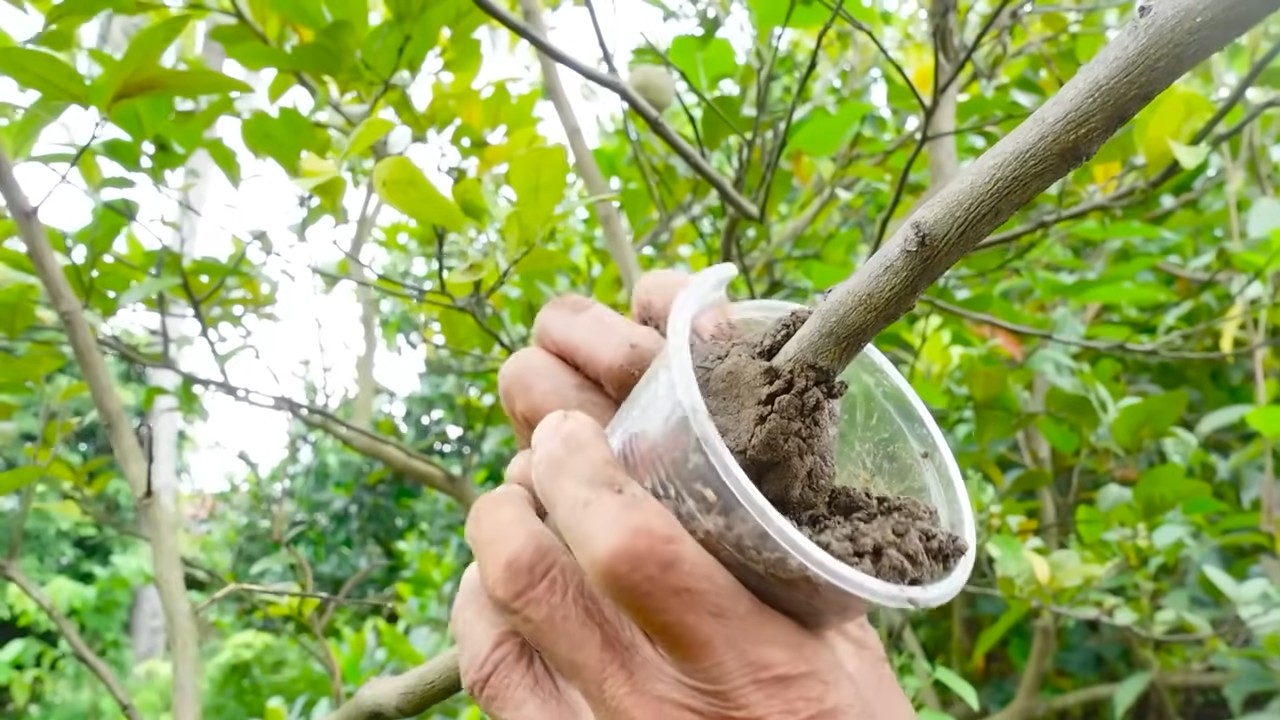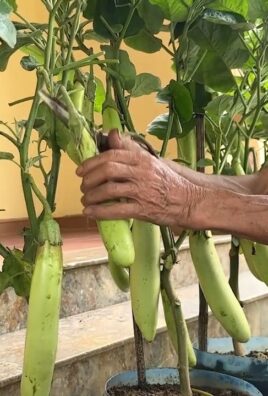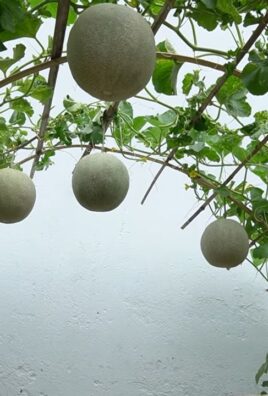Growing lemons year round might seem like a citrusy dream reserved for sunny California groves, but I’m here to tell you it’s totally achievable, even if you live in a less-than-tropical climate! Forget those sad, expensive lemons at the grocery store – imagine plucking your own juicy, fragrant fruit straight from your own little tree, whenever you need it.
Lemons have a rich history, dating back centuries and playing a vital role in everything from culinary traditions to medicinal practices. In many cultures, lemons symbolize cleansing, purification, and even longevity. Now, you can bring a piece of that vibrant history into your own home!
But why bother with the effort? Well, for starters, homegrown lemons taste infinitely better than store-bought ones. Plus, think of the satisfaction of nurturing a plant and reaping its delicious rewards. More importantly, growing lemons year round provides you with a consistent supply of fresh, organic fruit, free from pesticides and preservatives. This DIY guide will equip you with simple, effective tricks and hacks to ensure your lemon tree thrives, regardless of the season. I’ll walk you through everything from choosing the right variety to providing the perfect environment, so you can enjoy the zesty goodness of homegrown lemons all year long. Let’s get started!

Growing Lemons Year-Round: A Comprehensive DIY Guide
Hello dear garden friends! Have you ever wished you could pick fresh, sun-ripened lemons directly from your own tree all year round? Me too! And after some experimenting and learning, I’ve found out how. While it’s not entirely easy, with a little planning and the right techniques, you too can enjoy your own lemon harvest throughout the year. Let’s dive in!
The Basics: What Lemon Trees Need to Thrive
Before we get into the details, it’s important to understand what lemon trees truly need to be happy and productive.
- Sunlight: Lemon trees are sun worshippers. They need at least 6-8 hours of direct sunlight per day.
- Soil: Well-draining, slightly acidic soil (pH between 6.0 and 7.0) is ideal. Waterlogging is the enemy!
- Water: Regular watering is important, especially during the growing season. But don’t overdo it! The soil should be moist but not waterlogged.
- Temperature: Lemon trees are sensitive to frost. Temperatures below freezing can damage or even kill them.
- Nutrients: Lemon trees are hungry! Regular fertilization with a citrus fertilizer is essential.
- Protection: Protection from wind and extreme weather conditions is important, especially for young trees.
Choosing the Right Variety: Not All Lemons Are Created Equal
Choosing the right lemon variety is crucial for success. Some varieties are better suited for growing in pots or in colder climates. Here are some of my favorites:
- Meyer Lemon: This variety is known for its sweetness and ability to thrive even in colder climates. It’s also a good choice for container growing.
- Eureka Lemon: One of the most common lemon varieties, known for its acidic taste and high yield.
- Lisbon Lemon: Similar to the Eureka lemon, but a bit more robust and resistant to cold.
- Improved Meyer Lemon: An improved version of the Meyer lemon that is even more disease resistant.
Step-by-Step Guide: Growing Lemons Year-Round
Now comes the exciting part! Here’s my step-by-step guide on how you can grow your own lemons all year round:
1. Choose the Right Location
- Outdoors: If you live in a mild climate, choose a sunny spot with well-draining soil. Make sure the tree is protected from strong winds.
- In a Pot: If you live in a colder climate or have limited space, container growing is the best option. Choose a large pot with drainage holes and use high-quality citrus potting mix.
2. Planting the Lemon Tree
- Outdoors: Dig a hole twice as wide and as deep as the tree’s root ball. Carefully place the tree in the hole and backfill with soil. Water the tree thoroughly.
- In a Pot: Fill the pot with citrus potting mix. Make a hole in the center and carefully place the tree in it. Fill the pot with soil and water the tree thoroughly.
3. Watering and Fertilizing
- Watering: Water the tree regularly, especially during the growing season. Allow the soil to dry out slightly between waterings. Avoid waterlogging.
- Fertilizing: Fertilize the tree every 4-6 weeks with a citrus fertilizer. Follow the instructions on the package.
4. Pruning
- Regular Pruning: Prune the tree regularly to maintain its shape and promote fruit production. Remove dead, diseased, or damaged branches.
- Shaping: Prune the tree to create an open, vase-like shape. This allows for better air circulation and sunlight exposure.
5. Frost Protection
- Outdoors: If frost threatens, cover the tree with a frost protection blanket. You can also mulch the soil around the tree to protect the roots.
- In a Pot: Move the pot to a sheltered location, such as a garage or greenhouse. If that’s not possible, wrap the pot with a blanket to protect the roots.
6. Pest Control
- Regular Inspection: Regularly inspect the tree for pests such as aphids, scale insects, and spider mites.
- Natural Pest Control: Use natural pest control methods like neem oil or insecticidal soap to combat pests.
Special Techniques for Year-Round Harvest
Here are some special techniques I use to ensure I have lemons all year round:
1. Stress Induction
- Slight Drought Stress: By exposing the tree to slight drought stress (i.e., watering it a little less), I can encourage it to produce flowers. This works best when the tree is healthy and established.
- Caution: Don’t overdo the drought stress, as this can harm the tree.
2. Temperature Manipulation (for Potted Plants)
- Cool Nights: If you have the tree in a pot, you can place it in a location during the cooler months where it is exposed to cooler night temperatures. This can promote flowering.
- Not Too Cold: Make sure temperatures don’t drop below freezing.
3. Multiple Trees with Different Ripening Times
- Strategic Variety Selection: If you have space, plant several lemon trees with different ripening times. This will give you a continuous harvest throughout the year.
- Example: A Meyer lemon that ripens early and a Eureka lemon that ripens later.
Common Problems and Solutions
Even with the best efforts, problems can arise. Here are some common problems and how I fix them:
- Yellow Leaves: This can indicate overwatering, nutrient deficiency, or pest infestation. Check watering, fertilize the tree, and treat it for pests if necessary.
- Fruit Drop: This can be caused by stress, insufficient pollination, or nutrient deficiency. Ensure adequate watering, fertilize the tree, and hand-pollinate the flowers if necessary.
- Pests: Treat pests as quickly as possible with natural pest control methods.
Additional Tips and Tricks
Patience: Lemon trees take time to mature and bear fruit. Be patient and don’t give up!
Mulching: Mulch the soil around the tree to retain moisture and suppress weeds.
Hand Pollination: If you are growing the tree indoors, you can hand-pollinate the flowers by going from flower to flower with a small brush.

Conclusion
So, there you have it! Mastering the art of growing lemons year-round isn’t some unattainable dream reserved for seasoned horticulturalists. It’s an achievable goal, even for those with limited space or a less-than-green thumb, thanks to these simple yet effective DIY tricks. We’ve demystified the process, breaking down the complexities into manageable steps that anyone can follow.
Why is this a must-try? Imagine the sheer joy of plucking a sun-ripened lemon from your own tree, even in the dead of winter. Think of the vibrant zest adding a burst of freshness to your culinary creations, the tangy juice elevating your beverages, and the satisfaction of knowing you nurtured that citrusy goodness from seedling to fruit. Beyond the practical benefits, growing lemons year-round offers a therapeutic connection to nature, a rewarding hobby, and a conversation starter that’s sure to impress your friends and family.
But the beauty of this DIY approach lies in its adaptability. Feel free to experiment with different lemon varieties. Meyer lemons, with their sweeter, less acidic flavor, are a popular choice for indoor growing. Eureka lemons, known for their classic tartness, are another excellent option. Consider grafting your lemon tree onto a hardier rootstock to enhance its resilience and disease resistance. You can also explore different container sizes and materials to find what works best for your space and aesthetic preferences.
Don’t be afraid to get creative with your growing environment. If you live in a particularly cold climate, consider investing in a grow light to supplement natural sunlight during the winter months. A humidity tray filled with pebbles and water can help maintain optimal humidity levels, especially in dry indoor environments. And remember, consistent monitoring and adjustments are key to success. Pay close attention to your lemon tree’s needs and adapt your care routine accordingly.
We’ve armed you with the knowledge and techniques to embark on your year-round lemon-growing adventure. Now, it’s time to put these DIY tricks into action. Start small, be patient, and don’t be discouraged by occasional setbacks. Every lemon tree is unique, and the learning process is part of the fun.
We are incredibly eager to hear about your experiences! Share your successes, challenges, and creative adaptations in the comments below. Post pictures of your thriving lemon trees, and let’s build a community of passionate lemon growers who are dedicated to enjoying the fruits (literally!) of their labor all year long. Let us know what specific challenges you faced and how you overcame them. Your insights could be invaluable to other aspiring lemon growers. Together, we can unlock the secrets to year-round lemon abundance and transform our homes into citrusy oases. So, go ahead, give it a try, and let the lemon-growing magic begin!
Frequently Asked Questions (FAQ)
What is the best lemon variety to grow indoors for year-round harvesting?
The Meyer lemon is often considered the best choice for indoor growing due to its smaller size, sweeter flavor, and tolerance for container life. Eureka and Lisbon lemons are also viable options, but they may require more space and attention. Consider your personal taste preferences and the available space when making your selection. Remember to research the specific needs of each variety to ensure optimal growth and fruit production.
How much sunlight does my indoor lemon tree need to produce fruit year-round?
Lemon trees require at least 6-8 hours of direct sunlight per day to thrive and produce fruit. If you don’t have a south-facing window that provides adequate sunlight, consider supplementing with a grow light. LED grow lights are energy-efficient and can provide the full spectrum of light that lemon trees need. Position the grow light close to the tree, but not so close that it burns the leaves. Monitor your tree’s growth and adjust the light as needed.
What type of soil is best for growing lemons in containers?
Lemon trees prefer well-draining, slightly acidic soil. A mixture of potting soil, perlite, and peat moss is a good option. Avoid using garden soil, as it can be too heavy and compact, leading to drainage problems. Ensure that your container has drainage holes to prevent waterlogging. You can also add a layer of gravel or pebbles to the bottom of the container to improve drainage.
How often should I water my indoor lemon tree?
Water your lemon tree when the top inch of soil feels dry to the touch. Avoid overwatering, as this can lead to root rot. Water thoroughly until water drains out of the drainage holes. Reduce watering frequency during the winter months when the tree is not actively growing. Monitor the soil moisture regularly and adjust your watering schedule accordingly.
What are the signs of overwatering or underwatering a lemon tree?
Signs of overwatering include yellowing leaves, leaf drop, and root rot. Signs of underwatering include wilting leaves, dry soil, and stunted growth. If you suspect that you are overwatering or underwatering your lemon tree, adjust your watering schedule accordingly. Check the soil moisture regularly and make sure that your container has adequate drainage.
How often should I fertilize my indoor lemon tree?
Fertilize your lemon tree every 4-6 weeks during the growing season (spring and summer) with a citrus-specific fertilizer. Follow the instructions on the fertilizer label carefully. Reduce or eliminate fertilization during the winter months when the tree is dormant. Avoid over-fertilizing, as this can damage the roots.
How do I pollinate my indoor lemon tree if there are no bees?
Indoor lemon trees may require hand-pollination to produce fruit. Use a small paintbrush or cotton swab to transfer pollen from the stamen (male part) to the pistil (female part) of each flower. Repeat this process every few days until the flowers are pollinated. You can also gently shake the tree to help distribute the pollen.
How do I prevent and treat common pests and diseases on my indoor lemon tree?
Inspect your lemon tree regularly for pests such as aphids, spider mites, and scale. Treat infestations with insecticidal soap or neem oil. Prevent fungal diseases by providing good air circulation and avoiding overwatering. If you notice any signs of disease, treat with a fungicide. Isolate any infected plants to prevent the spread of pests or diseases to other plants.
How do I prune my indoor lemon tree?
Prune your lemon tree in late winter or early spring to remove dead, damaged, or crossing branches. Prune to maintain the desired shape and size of the tree. You can also prune to encourage fruit production. Remove any suckers that grow from the base of the tree. Use clean, sharp pruning shears to avoid spreading disease.
What is the ideal temperature and humidity for growing lemons indoors?
Lemon trees thrive in temperatures between 65-75°F (18-24°C) during the day and 55-65°F (13-18°C) at night. They also prefer moderate to high humidity levels. If your indoor environment is dry, consider using a humidifier or placing a tray of water near the tree to increase humidity. Avoid placing your lemon tree near drafts or heating vents.





Leave a Comment